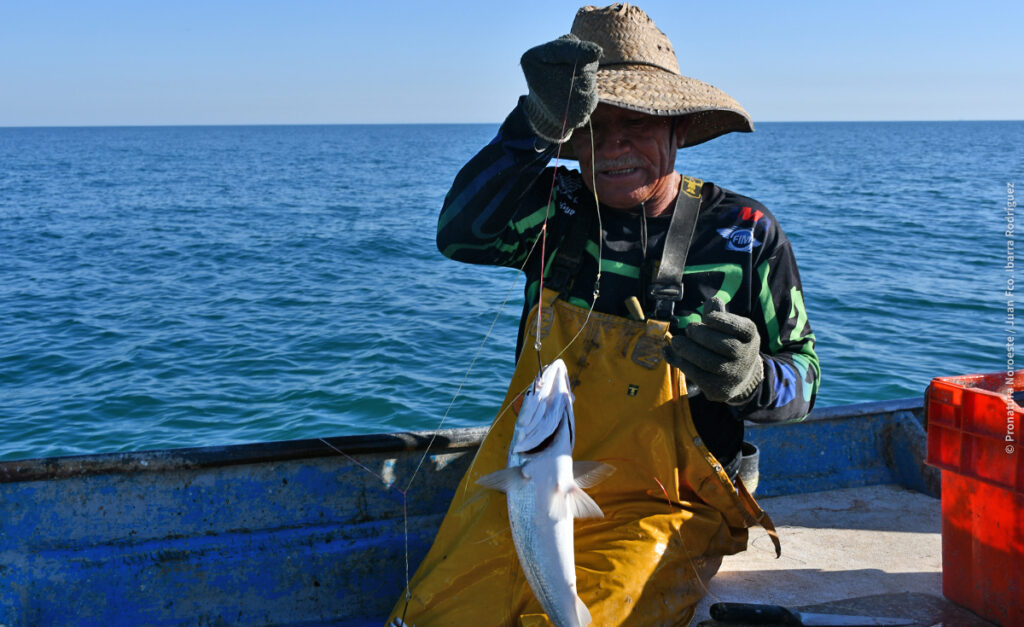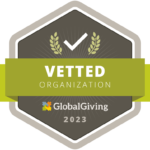In the warm and nourishing waters of the Upper Gulf of California, the Vaquita porpoise (Phocoena sinus) maintains its struggle for existence. They face the gillnets used for the totoaba (Totoaba macdonaldi) fishery, a species also in danger of extinction, which overrun their habitat and endanger the species and the biodiversity that shares the same fatal destiny.
Endemic to Mexico, the vaquita has been included in the International Union for Conservation of Nature (IUCN) Red List of Threatened Species and is legally protected by Mexican Standard NOM-059-SEMARNAT-2010. There is no doubt about the causes that deplete its population: gillnets have been identified by scientists, civil society organizations and the international community as the main cause of the dramatic decline in the population of the Mexican porpoise to critical levels.
The species’ situation is not simple: the 2023 Vaquita Observation Cruise counted 10 to 13 porpoises, with one or possibly two calves. It is currently the most endangered cetacean in the world.
All conservation efforts for the species are dedicated to ensuring that the area identified by scientists as the last bastion of its habitat – known as the Zero Tolerance Zone – is free of fishing nets, which will allow the species to recuperate.
More than 30 years of experience in developing conservation strategies for priority species in collaboration with communities has paved the way for our approach, with guidelines that include the active participation of legal fishermen from San Felipe, Baja California, and the Gulf of Santa Clara, Sonora. Since both communities are based on fishing and their identity is strongly linked to the sea, they must be involved as fundamental actors in the transition to sustainable fisheries that guarantee a safe habitat for the vaquita and other marine species.

From 2022 to date, we have been working intensively on three lines of action to promote behavioral changes in the community, contemplating technical, economic and social aspects aimed at the goal of zero entanglement of vaquita in the Upper Gulf of California.
We work closely with local fishermen to develop fishing gear that is both vaquita-friendly and efficient, with a catch volume sufficient to provide a decent income for the fishermen. We have achieved promising results by using hand lines to catch silver curvina, yellowfin curvina, chano and sierra, and shrouds to catch mostly drumsticks and foreign mackerel.
In eight months of working with these vaquita-friendly fishing methods, we recorded 8.2 tons of fish with a sale price of 633,000 pesos, about 363,000 pesos more than what is paid on the beach. This was almost three times more than what is normally obtained in the area, motivating more fishermen to voluntarily seek training and join the sustainable fishing program we are promoting.
This effort is wrapped up in the Fisheries Improvement Project (FIP), which is dedicated to several scale species of the Upper Gulf of California, such as silver curvina (Cynoscion nothus), yellow curvina (Cynoscion xanthulus) and chano (Micropogonias ectenes), with a complete focus on the sustainability of the fishery. To this end, we have added a traceability program that promises to give certainty to buyers through blockchain technology, which allows transparency in each link of the process and clearly shows compliance with the commitments built into the sustainability strategy.
None of this would be possible without the coordinated effort of our allies at Pesca ABC, Ocean Conservancy, Cetaceans Action and Conservation, the National Commission of Natural Protected Areas, through the Upper Gulf of California Biosphere Reserve and Colorado River Delta, and the Global Ghost Gear Initiative.
There is a way for fishing communities and marine wildlife to coexist in the Upper Gulf of California, and we are working toward it every day.
Join the vaquita cause!












